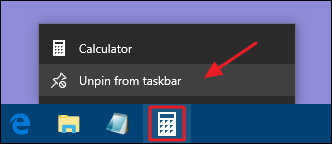
One of the most significant benefits of Amazon Prime has long been the free two-day shipping on almost everything. But that time may be coming to an end—Amazon is talking about transitioning to free one-day shipping. Oh yeah.
In a call to investors yesterday, Amazon CFO Brian Olsavsky said the company is working on setting the Prime shipping default to one-day. He said that they have been “working on evolving the Prime shipping program” with one-day shipping, going on to say that they’ll “be building most of this capacity through the year in 2019.”
The word on the street is that Amazon will spend upwards of $800 million for the required infrastructure changes to make the change happen. They’ll also be expanding partnerships with USPS, UPS, and FedEx—alongside its own delivery service, of course—to make the one-day dream a reality.
While it’s probably unlikely we’ll see one-day shipping hit all items before the end of 2019, Amazon is already making moves to get this shindig started earlier. For example, it dropped the $35 minimum for the current one-day shipping option and expanded eligible zip codes just last month. So the plan is already in motion.
This is a smart move from Amazon, because many competing retailers, like Wal-Mart and Target, are now offering free two-day shipping on most items. This makes buying from Amazon less compelling to users, especially when you consider the fact that you don’t have to shell out $120 a year to the other guys to leverage the two-day option. Moving to one-day shipping will once again give Amazon the shipping advantage.
The big question, however, is one that hasn’t yet been addressed: will this raise Prime membership costs? If I were a betting man, I’d put a healthy sum on “yeah, probably”—even if an increase doesn’t happen immediately, it’s inevitably going to happen.
In other news, people aren’t upgrading smartphones as often, Disney looks to take control of Hulu, Walmart opened the “store of the future,” and a lot more. Let’s talk about it.
- Smartphone upgrades slow: According to recent reports from Verizon and AT&T, consumers aren’t upgrading their smartphone as often. Both companies reported record low upgrades from a year ago. Smartphones are just too good now! [The Verge]
- Disney may take 90% control of Hulu: Disney currently owns 60% stake in Hulu, but it’s in talks to buy Comcast’s 30% stake as well. That will give Disney 90% ownership of Hulu. There are a lot of unanswered questions about what this will mean for Hulu’s content, but those will likely get answered if the deal goes through. [CNBC]
- Walmart’s “store of the future”: Walmart recently opened a concept store with AI-enabled cameras to monitor stock and interactive displays. Walmart is calling the Levittown, NY store “Intelligent Retail Lab”—or “IRL” for short. Cheeky. [Techcrunch]
- Hackers can remotely kill cars: In slightly (or incredibly?) terrifying news, a hacker opened up to Motherboard with a crazy story about how he can remotely kill car engines by leveraging vulnerabilities in GPS tracking apps. What a world. [Motherboard]
- GoDaddy acts against scams: The company reportedly took down 15,000 domains used for scams, as well as resetting “several hundred” compromised account passwords. [ZDNet]
- Samsung orders Fold teardown takedown: iFixit has removed its teardown of the Galaxy Fold at Samsung’s request. It’s still up on The Internet Archive, but who knows for how long. [Android Police]
- Amazon is building a high-def music service: While Amazon is offering free ad-based music to Echo users, the company is also reportedly working on a high-quality music streaming service a la Tidal. Interesting choice—we all know how well Tidal is doing. [The Next Web]
- Xiaomi patented a phone with a reverse notch: You know how to combat notches? Put the camera above the phone! That’s Xiaomi’s idea, anyway, and it’s so laughably bad I want you all to see it too. Seriously, lol. [TechRadar]
- Apple is fixing a serious App Store bug: Some users can’t buy or install anything because they can’t get past the Terms & Conditions. Fortunately, Apple has already fixed this issue. What a stupid problem to have. [9to5Mac]
- The PS5 is more than a year away: Sony says the PlayStation 5 will not be coming between now and April 2020. At least I know I won’t have to buy one within the next 12 months. Yay? [Engadget]
In a bit of fun news, Google has a new Avengers: Endgame-themed easter egg. Go to Google, search for “Thanos,” then click the gauntlet on the right side. It’s not a one-night stay in a giant potato, but it’s still pretty cool. Enjoy.









































